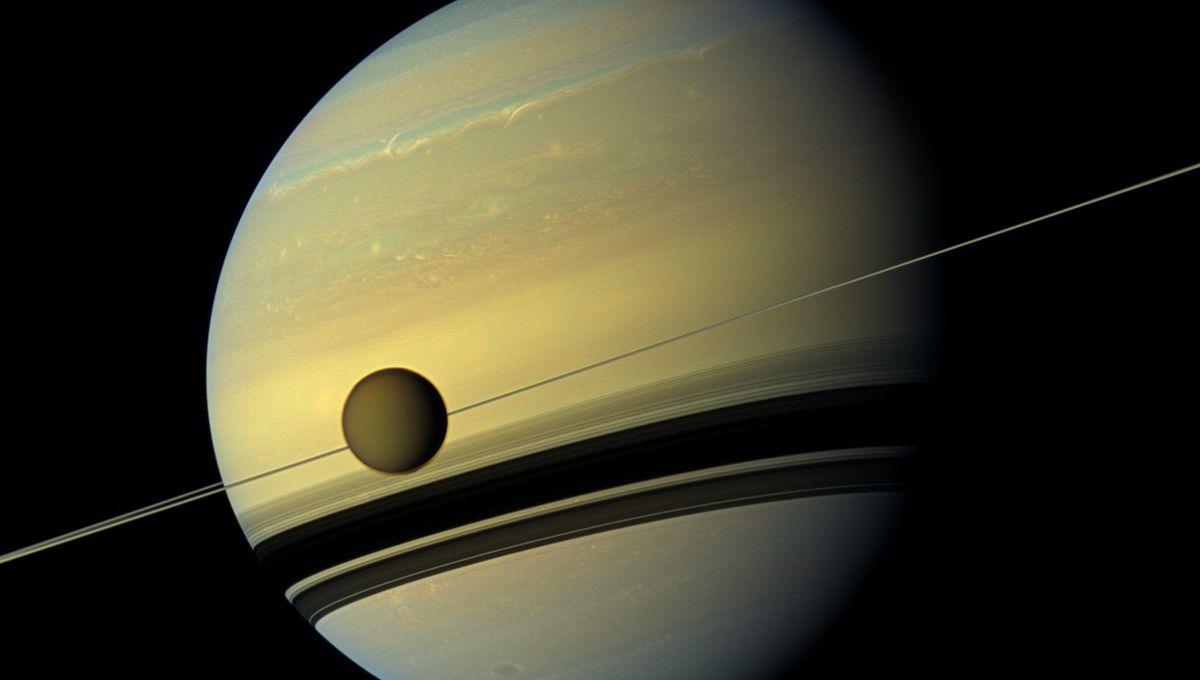The planets of the Solar System are roughly on the same plane, but the fact that they are not exactly aligned means that peculiar events happen once in a while. Between Earth and Saturn, there are a few fun events to observe, including Saturn's rings “disappearing” as the tilt of the planet produces an optical illusion from our viewing location. There’s another effect that happens every 15 years, and that is the transit of the moon Titan’s shadow. On certain dates throughout July, August, and September this year, you can watch Titan race across the face of the gas giant.
Earth and Saturn have a similar tilt with respect to their orbital planes. It is 23.5 degrees for our planet and 26.7 degrees for the Lord of the Rings. The inclination of their planetary orbits is also pretty similar, respectively 1.57 degrees and 0.93 degrees with respect to the invariable plane of the Solar System, where the barycenter is located, and it is perpendicular to the angular momentum of the whole system. As the planets go around the Sun at different speeds, it makes sense that after a certain number of years, their positions are back where they were. So every 15 or so years, the planets are aligned so that Saturn's rings seem to disappear for a few days, as they are perfectly parallel to our point of view. At the same time, something else is happening. Given that Titan orbits the planet with an inclination of just 0.3 degrees on Saturn’s equator, this is the time to see the moon – Saturn's largest – cast its shadow across the planet. The moon takes almost 16 days to orbit Saturn, and given the size of the planet, this shadow play can be seen many times this year, all the way to January 2026. The next chance is next week, July 2, starting at 2:40 am ET, peaking at 5:35 am ET, and finishing at 8 am ET. The following one will be on July 18, peaking about 50 minutes earlier. The next dates are August 3, August 19, September 4, and September 20. You can tell already, based on the timing, that the Americas have a serious advantage in seeing this event right now, although the next few transits are not ideal for higher latitudes, as dawn will interrupt the spectacle. The best option, according to Sky & Telescope, is September 20. Saturn is going to be at opposition on September 21, so Earth and Saturn are at their closest. Saturn will then be at its brightest, allowing for the best chance to see the event. People in Europe might catch it too, as the event is bang in the middle of the night. They recommend a 3-inch telescope with at least a 200x magnification to see this. Another interesting date will be November 22. The rings will be at their narrowest on November 23, making for a striking and peculiar view of a ringless Saturn with a beauty spot across its face. [H/T: Sky & Telescope]





